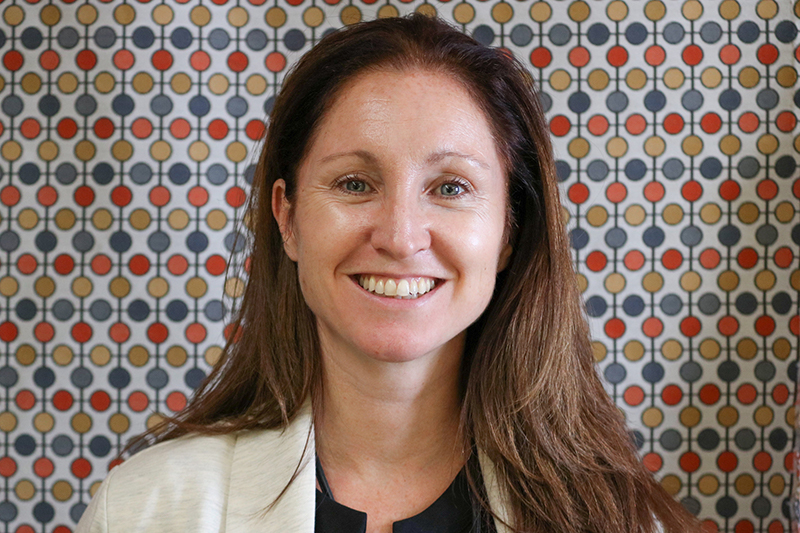Thursday, October 31, 2019

Boston Public Health Commission’s Devin Larkin explains that how services are delivered matters for engagement and retention.
Starting on a path to substance use recovery might not begin with checking into detox, or even speaking with a medical professional. It could be as simple as coming in off the street for a cup of coffee — or so says the philosophy of Boston Public Health Commission’s Recovery Services Bureau.
In 2017, the Bureau introduced its engagement center, which offers quality-of-life interventions for individuals managing substance use — basic creature comforts for people who often don’t have stable housing situations. As a drop-in location, the center allows people to stop in and take a break from the streets, even just for a warm beverage, to watch TV, or to unleash their creative side with art supplies.
The Bureau’s priority is to find ways to reach people who aren’t likely to engage with traditional healthcare systems, providing low-threshold, open-door support wherever their clients are. Together, the Bureau keeps tabs on the welfare of the community they serve and, when people are ready, links them to many options for healthcare, mental health care, and substance use treatment.
The approach works. Each week, about 90 people enter into treatment.
“By creating a low-barrier environment to services, we are able to meet people managing substance use right where they are,” says Devin Larkin, director of the Bureau.
An empathetic view of treatment barriers
Larkin (SSW ’07, SPH ’09), who has a master’s in social work and public health from Boston University, credits her educational training as being key to her innovative approach to serving people with substance use disorders — from understanding the impact of social determinants of health, to respecting an individual patient’s autonomy.
By creating an environment that is, first and foremost, kind, the Bureau provides an open gateway of support to a vulnerable population.
Under-resourced clients can face challenges in piecing together the different aspects of their healthcare. They may have a doctor’s appointment in one community and a visit to a detox center in another. For a person without reliable transportation, having to arrive to an appointment on time can be a hurdle. For someone involved in the criminal justice system, engaging with security desk staff at a clinic can be a deterrent to engaging in care, says Larkin.
“You could have the best opioid treatment team in the world, but if nobody wants to walk past the security desk to find that clinic, it’s just a passive recruitment strategy,” she says.

The Bureau has a significant footprint in Boston. It currently manages three residential treatment centers, a street outreach team, an access to care program, a needle exchange program, resources for homeless individuals, and more. At about 150 employees strong, the Bureau also cultivates a wide network of external partners to spin its significant support web: health centers and treatment centers, community groups, homeless outreach teams, first responders, and more. The Bureau’s staff can step in to help break down barriers by navigating clients’ care alongside them. If a client needs a replacement ID, or has an open court case, for example, Bureau staff can help with the process or even accompany the person so they don’t have to navigate these channels alone.
“All those things where other systems typically say, ‘Go take care of that, then come back’—that’s where you lose people, especially people who are complex psychiatrically and medically,” says Larkin.
Once someone walks through the door at the engagement center, they can then be introduced to services and resources they need, such as housing and healthcare, without judgement. And when they’re ready, they can begin treatment for substance use disorder. Honoring client self-determination is key to creating partnerships with individuals engaging in the recovery process, says Larkin, regardless of whether it’s their first pass, or one of many, into recovery.
Integrating harm reduction into healthcare
The Bureau’s emphasis on low-barrier services has had its share of critics, some concerned about overwhelming the system with needy people. Larkin invites skeptics to come learn more about their person-centered approach, which has been well-received in the substance use community. She believes that if social, behavioral, and medical care systems come together in a harm-reduction mindset, they’d all share equally in the commitment to support vulnerable patients.
“We’d like to see needle exchanges in health centers,” says Larkin. “We’d like to see more low-threshold services for behavioral health; if someone comes to their appointment an hour late, they can still be seen.”
As a social work practitioner, Larkin also wants human service providers to recognize that every interaction a client has affects their future likeliness to seek care. If programs and interventions are designed to help people feel welcome and worthwhile, they are more likely to produce positive future outcomes.
“People need to feel like the programs are built for them,” she says. “That’s how you engage people in care.”
This article is part of a series from the Boston University Center for Innovation in Social Work & Health (CISWH) for Boston Medical Center’s HealthCity that highlights social workers working in healthcare and public health to address the nonmedical factors that impact health, known as social determinants of health. Know of a healthcare team that’s doing innovative work involving social workers? Contact us — we want to hear your story.